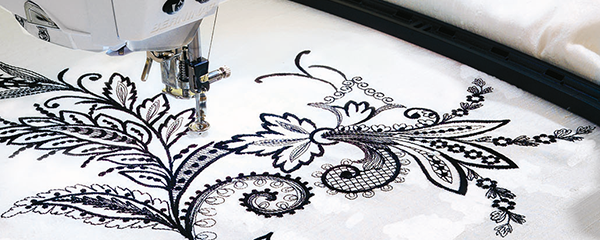After the invention of computer-controlled machines, embroidery was performed automatically by moving the frame according to the information embedded in the computer program. The information was stored in paper punch cards in the form of holes (openings), which were located in a specific order. The use of punch cards lasted until the 70s of the 20th century.
With the release of domestic embroidery machines the situation drastically changed. These machines transfer the information digitally or with an electrical cable. After creation of PCs, design and editing programs for computer embroidery began to appear, for example, WILCOM, TAJIMA, BARUDAN, which greatly simplified the process of creating designs for machine embroidery. However, these innovations were only used for large productions. Still, the punched tape served as a conduit between the computer and embroidery machine. Being so expensive, it will be a long time before software for computer embroidery and perforated tape will be available to mere mortals.
The complexity of computer embroidery application to the product
![Computerized Embroidery]()
Today, computer embroidery can be found on many products such as dresses, T-shirts, jackets, dress shirts, different types of hats, berets, caps, scarves and handbags, clothes for special promotions and even shoes. However, most of these products don’t have an ideal form for applying embroidery. Therefore, designers use a variety of techniques to adapt these products or their parts for embroidery.
Any embroidery requires free access to the working area of the material from both sides. Seams, decorative elements and other complex areas of design will present certain difficulties during the embroidery process. In order to adapt parts of clothing for successful embroidery, designers often layer the material, make one-piece backrests and provide required access to the underside of the base material. As for the working area, they usually select more dense materials or even a different color – taking into account the possibility of embroidery application.
Special equipment for embroidery on the wide and narrow headgear is used for headgear with a complex shape like baseball caps.
In this blog, we provided you with a definition of the term “Computerized Embroidery” and made an introduction to the beginning of an era of embroidery machines. Also, we offer you a huge selection of machine embroidery designs in out Online Store.
You may also like
Embroidery machine size and stitch limits





 Get Sign-In Link
Get Sign-In Link Login with Google
Login with Google Login with Facebook
Login with Facebook Login with Amazon
Login with Amazon Login with Paypal
Login with Paypal